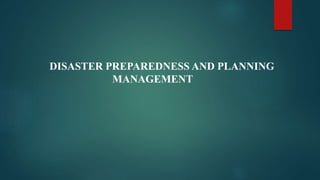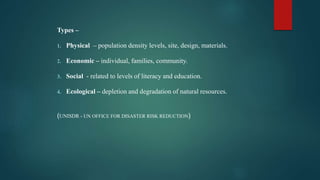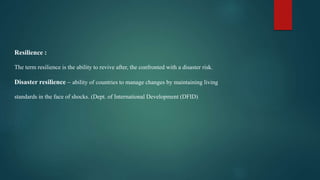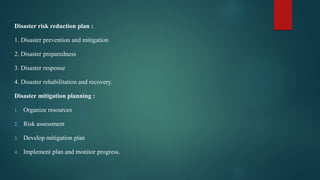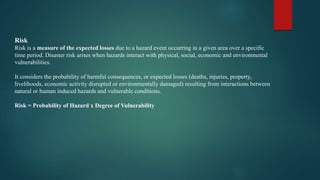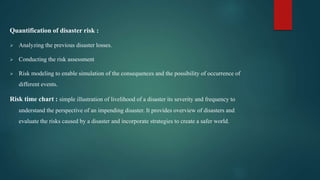The document discusses key concepts in disaster preparedness and management including definitions of disaster, hazard, vulnerability and risk. It outlines different types of natural disasters like floods, droughts, cyclones and earthquakes as well as man-made disasters such as industrial pollution and transportation accidents. India is described as one of the most disaster prone countries due to its unique geographical and socioeconomic conditions. The document also covers concepts like disaster impacts, risk reduction measures and the roles of various stakeholders in disaster management.
